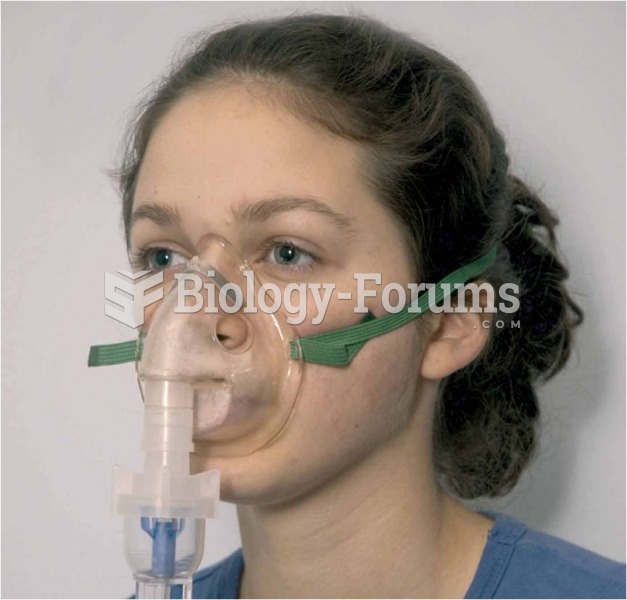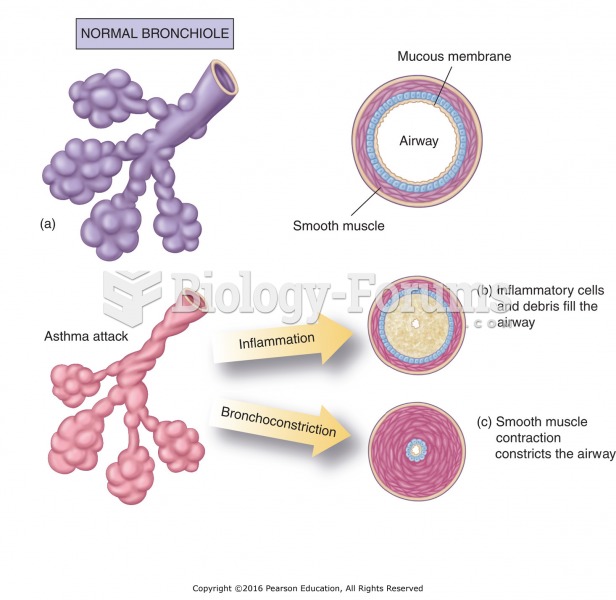Answer to Question 1
Correct Answer: 1,2,3
Rationale 1: The passages of the nose and throat filter, warm, and humidify inhaled air.
Rationale 2: The structures of the upper respiratory tract trap particulate matter and pathogens, preventing them from going down into the lungs.
Rationale 3: The upper respiratory tract structures are lined with tiny hairs called cilia that move back and forth, pushing foreign matter outward and away from the lungs.
Rationale 4: The nasal mucosa produces fluid rich in immunoglobulins that neutralize airborne pathogens.
Rationale 5: Saliva contains immunoglobulins that break down bacterial cell walls. When swallowed, this saliva exposes microorganisms to stomach acid, which kills them.
Global Rationale: The upper respiratory tract (URT) consists of the nose, nasal cavity, pharynx, and paranasal sinuses. These passageways filter, warm, and humidify air during inhalation. The URT traps particulate matter and many pathogens, preventing them from being carried to the bronchioles and alveoli, where they would have access to the capillaries of the systemic circulation. The mucous membranes of the URT are lined with ciliated epithelium. The cilia projecting from the epithelium are found throughout the nasal passages and help to trap smaller particles. The cilia have a wavelike motion that sweeps the pathogens and particulate matter upward toward the oropharynx, where they are swallowed when a person coughs or clears the throat. A sneeze clears the nasal passages. Saliva contains immunoglobulins (IgA) and lysozyme, which break down bacterial cell walls. Swallowed saliva or nasal mucus exposes microorganisms to the hostile environment of the stomach where they contact high gastric acidity and enzymes that kill them. The nasal mucosa is also part of the first line of body defense, secreting up to a quart of mucus daily. This fluid is rich in immunoglobulins that are able to neutralize airborne pathogens.
Answer to Question 2
Correct Answer: 1,2,3
Rationale 1: Complications of allergic rhinitis can include loss of smell or taste.
Rationale 2: Complications of allergic rhinitis can include hoarseness.
Rationale 3: Complications of allergic rhinitis can include plugged ears.
Rationale 4: Red, swollen, and itchy eyes are symptoms, not complications, of allergic rhinitis.
Rationale 5: Scratchy throat is a symptom, not a complication, of allergic rhinitis.
Global Rationale: Sometimes called hay fever, the symptoms of allergic rhinitis resemble those of the common cold and include tearing, burning, red, swollen, or itching eyes; sneezing; nasal itching or congestion; postnasal drip; cough; and scratchy throat. In addition to the acute symptoms, complications of allergic rhinitis may include loss of taste or smell, sinusitis, hoarseness, and plugged ears. Red, swollen, and itchy eyes and a scratchy throat are symptoms of allergic rhinitis, not complications.







